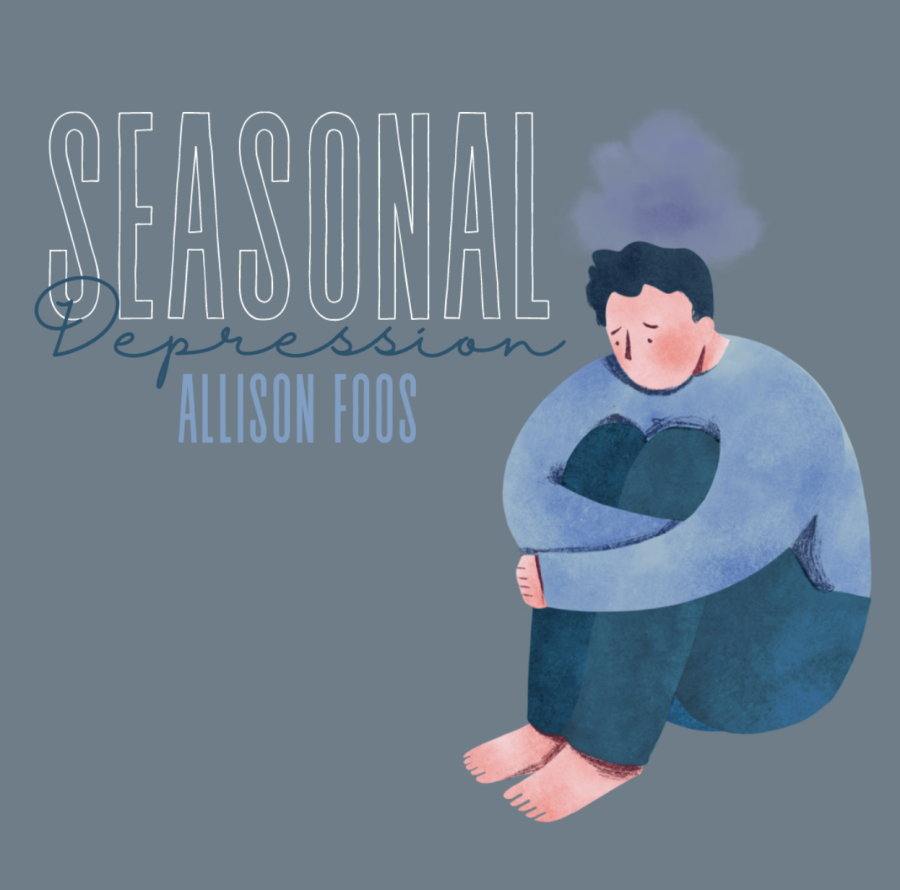Seasonal depression: symptoms and awareness
Allison Foos guides us through what seasonal depression is.
Jan 27, 2022
It’s that time of year again – the seasons are changing, snow is falling and temperatures are dropping. The changing seasons are a beautiful thing, right? Unfortunately, many people don’t feel that way. As the warm weather turns cold and as fall transitions into winter, something else arises that makes the winter months not so desirable: seasonal depression.
Seasonal depression, clinically known as seasonal affective disorder, is a type of major depressive disorder that causes episodes of depression due to seasonal changes. Seasonal depression most often occurs in the fall and winter months and later resolves in the spring. Some individuals are also affected by this disorder in the summer, although it is rare.
Seasonal depression is typically caused by seasonal changes because of the decrease in sunlight that occurs in the winter months. Less sunlight can lower levels of serotonin, which is a leading hormone in stabilizing one’s mood, emotions and overall happiness. As a result, a decrease in serotonin may cause undesirable mood changes and other symptoms of seasonal depression.
The American Psychiatric Association explains that symptoms of seasonal depression include fatigue, weight gain, sadness, loss of interest in previously enjoyable activities, feeling worthless, difficulty thinking,suicidal thoughts and more.
Symptoms generally improve when spring and summer arrive, but there are various treatments that may speed up that process. Some individuals find simple treatments such as vitamin D supplements or light therapy to be helpful in improving their seasonal depression. Others turn to talk therapy, antidepressants or other methods. Consult a doctor before pursuing treatment if you or someone you know begin experiencing these symptoms.
According to Psychology Today, in order to be clinically diagnosed with seasonal affective disorder, one must meet criteria for major depression during specific seasons for at least two consecutive years and the depression must occur more often than any other non-seasonal depression. Approximately 10 million Americans are affected by seasonal depression, and it is more likely to appear in women than men. Seasonal depression generally begins between the ages of 20 and 30, but symptoms can appear earlier.
The John Carroll University counseling center offers various services and resources to help you through any obstacles you may be faced with, including seasonal depression. All students are encouraged to take advantage of this resource!
National suicide prevention helpline: 800-273-8255














